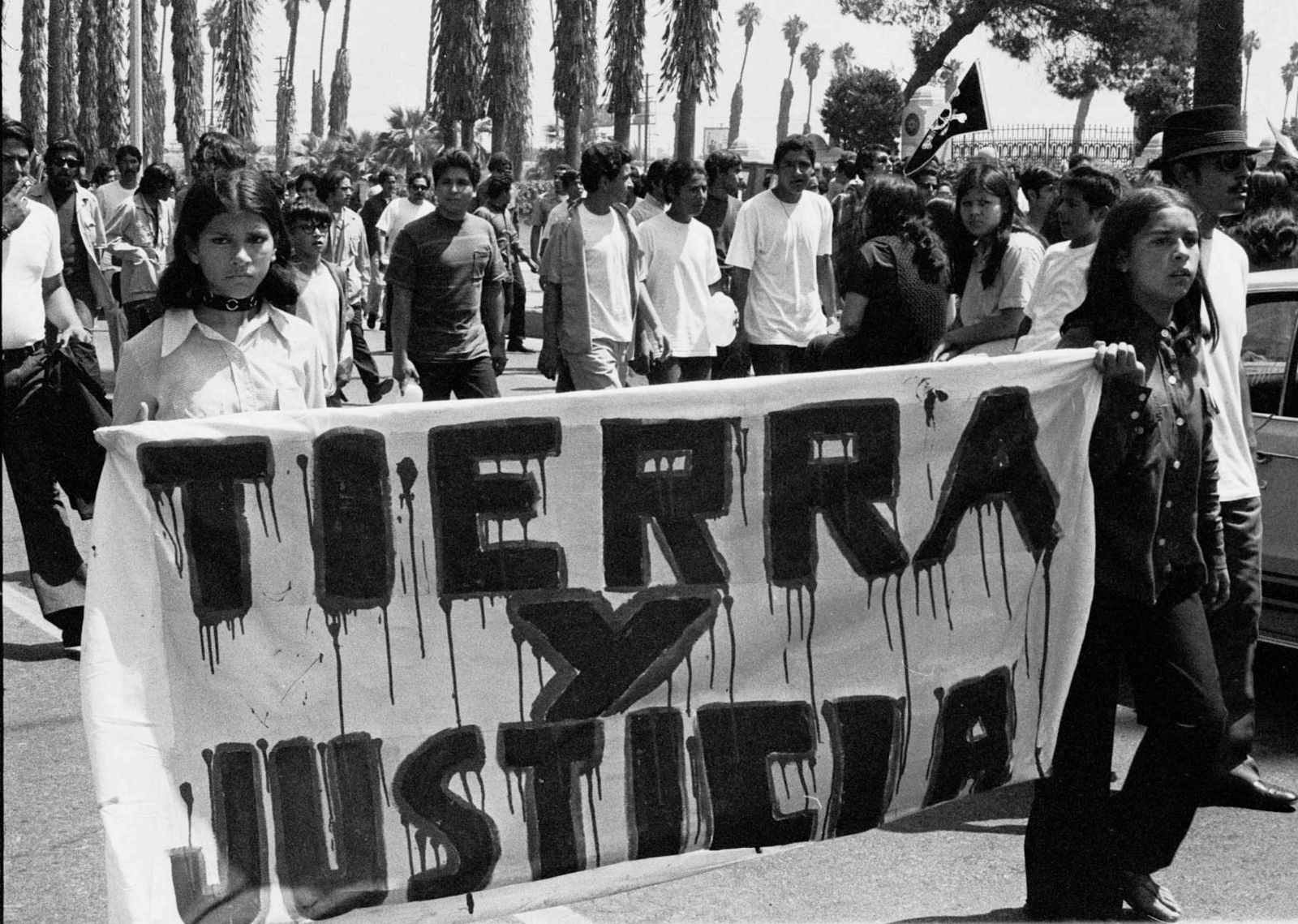Welcome to L.A. Taco’s column, “Barrio Wisdom.” In this column, we follow the streets-meet-academia wisdom of Dr. Álvaro Huerta, a professor at California State Polytechnic University, Pomona.
[dropcap size=big]W[/dropcap]hile cops and other state agents have been killing Brown, Black and Indigenous people, among other racialized groups, since the first Europeans arrived in the Americas several hundred years ago, the horrific videos documenting the torture and murder of Mr. Floyd, allowed for millions of White people, etc., to witness what many who come from the streets are all too familiar with.
As I witness the righteous avalanche of protests against the cop killing of George Floyd and Andres Guardado, and now shooting of Jacob Blake, as part of an ongoing resistance against systemic racism towards Black and Brown bodies, it seems like America changed overnight.
Moreover, as I mourn the cop killings of racialized people, I can’t help but recall when the cops killed the acclaimed journalist Ruben Salazar on August 29, 1970, during the National Chicano Moratorium in East Los Angeles.
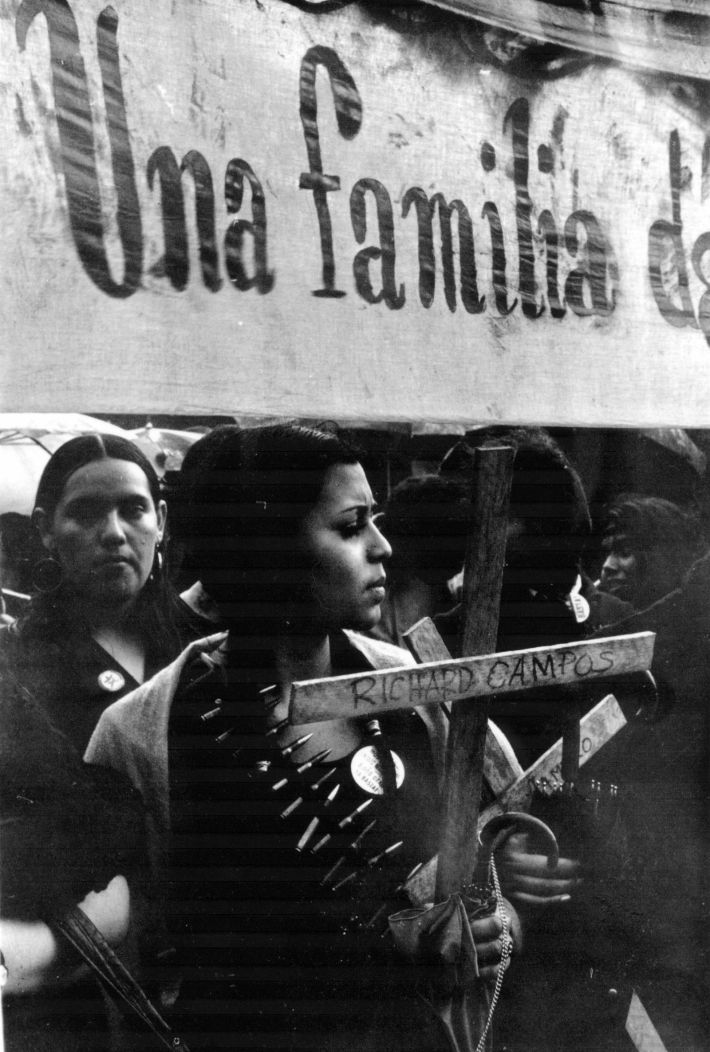
The cops (specifically, Los Angeles County Sheriff Deputy Thomas Wilson) murdered Salazar at The Silver Dollar while the journalist was taking a break from the protest, where two other protestors died. In Occupied America: A History of Chicanos, 5th Edition (2004), the Chicano historian Dr. Rodolfo "Rudy" Acuña sheds light on this historic event: “… By noon participants numbered between 20,000 and 30,000. Conjuntos blared out corridos; Vivas and yells filled the air; placards read: ‘Raza si, guerra no!’ and ‘Aztlán: Love it or Leave it!’ Sheriffs’ deputies lined the parade route, helmeted, making no attempt to establish contact with the marchers: no smiles, no small talk. The march ended peaceably; and the event turned into Laguna Park [now, Salazar Park] …” (p. 333).
As documented by the Chicana historian Dr. Cynthia Orozco, while a doctoral student in history at UCLA, before the cops, initiated violence and mayhem, this was a peaceful event against the war in Vietnam “… and discrimination and exploitation in the barrios…” (La Gente, October 1985, p. 9).
“The Chicana/o Moratorium signaled our communities' strategic opposition to the racist and capitalist overtones of U.S. militarization.”
As part of the turbulent 1960s, when many Mexican Americans transformed into Chicanas and Chicanos demanded their civic and human rights, the activists focused on key issues impacting their communities. This included the fact that Chicanos were disproportionately drafted to fight and be killed or maimed in the U.S. imperialist war against Vietnam. This also included protesting against poor, segregated schools, where Chicanas and Chicanos lacked (to the present) opportunities to pursue higher education and upward mobility. According to the Chicana historian Dr. Irene Vasquez, this historical event represented a conscious opposition against the system: “The Chicana/o Moratorium signaled our communities' strategic opposition to the racist and capitalist overtones of U.S. militarization.”
Acknowledging the inherent contradictions of American capitalism and its imperialist nature, the Chicano historian Dr. Juan Gómez-Quiñones wants us to focus on the heroic leaders and protestors of this historic event: “Memories, films, and writings of people’s bravery best commemorate August 29th, not the viciousness and cowardice of law enforcement” (communication, July 16, 2020). We can clearly see the importance of documentation by the excellent writers and photographers of La Raza magazine, such as the photographs included in this essay. In terms of archival documentation, we’re also fortunate for the filmmaker Tomas Myrdahl who captured this massive protest on film. Writing eloquently and powerfully, as is his custom, about the Chicano Moratorium in an earlier essay, Dr. Gómez-Quiñones states: “To be sure, the memorial candle does not lighten either dark comers or as yet unwritten pages on all matters pertinent to the events of August 29, 1970.”
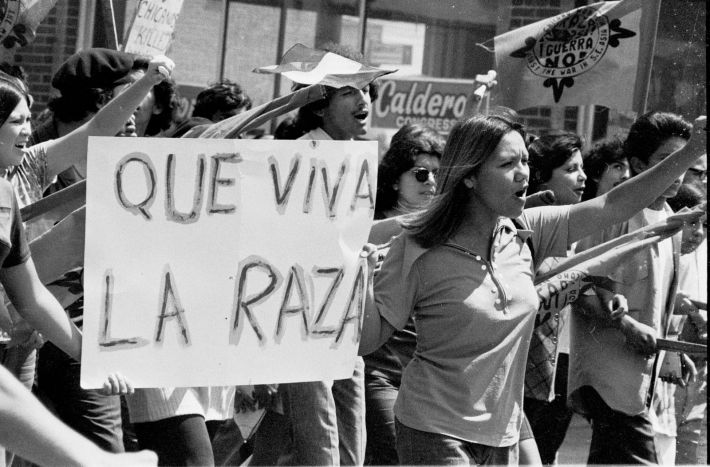
On July 20, 2020, I interviewed—Carlos M. Montes—veteran activist, co-founder Brown Berets and member of East L.A. 13—about the significance of the August 29th protest in particular and the movement in general. As part of the interview, Montes—a longtime resident of East Los Angeles (my motherland)—informed me about his role with the Brown Berets, who played a leading role in organizing this massive protest. According to Montes, the Brown Berets, led by David Sanchez, evolved from the Young Chicano for Community Action, which emerged from the original Young Citizens for Community Action (YCCA). The language from “Citizens” to “Chicanos” represents a transformational change of this young nascent organization.
While there’s usually a focus on men in terms of most social movements during this period (to the present), Montes stressed that Chicana leaders, like Gloria Arellanes (and other Chicana activists), also played a major role in the rise of the Brown Berets and the movement. (Given that other Chicana and Chicano historians have written about internal conflicts in the Brown Berets, along with state agents, infiltrators, and provocateurs. I will defer to other scholars and writers for additional details on these important matters.)
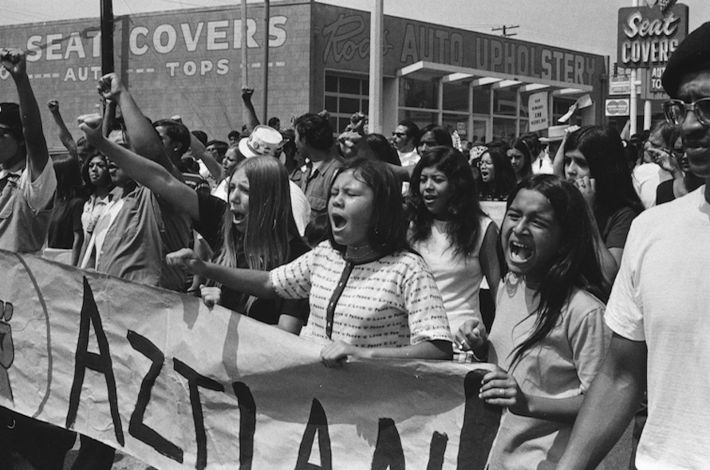
As part of their organizing efforts, the Chicana and Chicano activists opened La Pirañya coffeehouse in East Los Angeles—the current location of Tamayo's Restaurant (on Olympic). At La Pirañya, the activists socialized, invited speakers/leaders (Rodolfo “Corky” Gonzales), learned about politics, and organized political activities. They also produced their own newspaper, La Causa, and operated El Barrio Free Clinic.
While individual leaders may receive all the credit...it takes a collective effort to succeed in successful social and justice movements.
Prior to the Chicano Moratorium of August 29th, according to Montes and other sources, there were several protests leading up to this historic event, as part of the national and local anti-war movement by la Raza. This included, but not limited to, protests in East Los Angeles on December 20, 1969, January 1, 1970, and February 28, 1970. For Montes and fellow activists and protestors, they opposed U.S. imperialism in Vietnam, where Chicanos were being sent to fight and be killed for a nation that treats them as second-class citizens. Activists also learned from and respected international leaders, such as Ernesto “Che” Guevara, who fought heroically against U.S. imperialism.
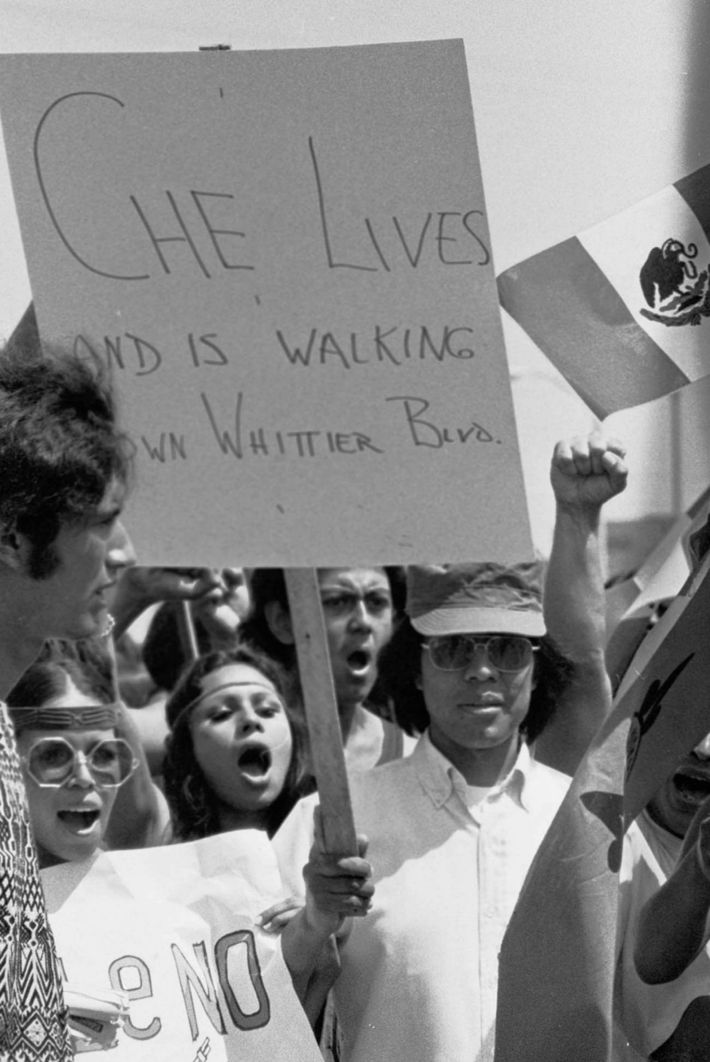
As part of their organizing efforts, the Brown Berets formed the National Chicano Moratorium Committee, where they collectively organized their first demonstration on December 20, 1969, at Obregon Park in East Los Angeles (on 1st Street), where an estimated 1,000 protestors participated. Rosalio Muñoz —UCLA student, first Chicano student-body president and member of the United Mexican American Students (UMAS)—became co-chair of this important committee.
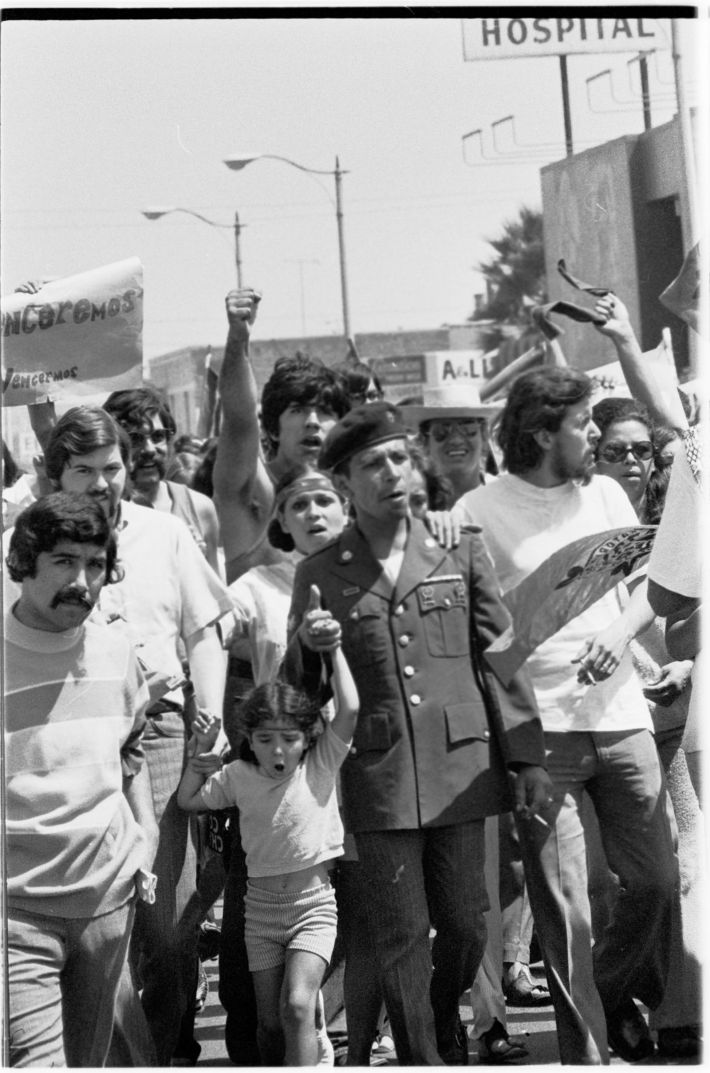
To be clear, while individual leaders may receive all the credit, as a former community organizer and expert of social movements, it takes a collective effort to succeed in successful social and justice movements. In fact, Muñoz, who valiantly challenged his draft notice letter, like other brave Chicanos (e.g., Ernesto B. Vigil, Salomón Baldengro), gives credit to the Chicana activists who played a major role in the protest that occurred on February 28, 1970 in East Los Angeles at Laguna Park, where an estimated 5,000 protestors participated: “It was the first Chicano demonstrations when a Chicana organization, Las Adelitas de Aztlan, marched in its own right. Many units of the Brown Berets marched, having come from Santa Barbara to Riverside, Oakland to San Diego. College MEChA groups marched with their banners” (LatinoLA, February 24, 2010).
As Chicana and Chicano activists organize for the 50th anniversary of the Chicano Moratorium on Saturday, August 29, 2020, I interpret these significant actions and protests—past, present, and future—as collective demands by a proud people to be treated with dignity and respect.
